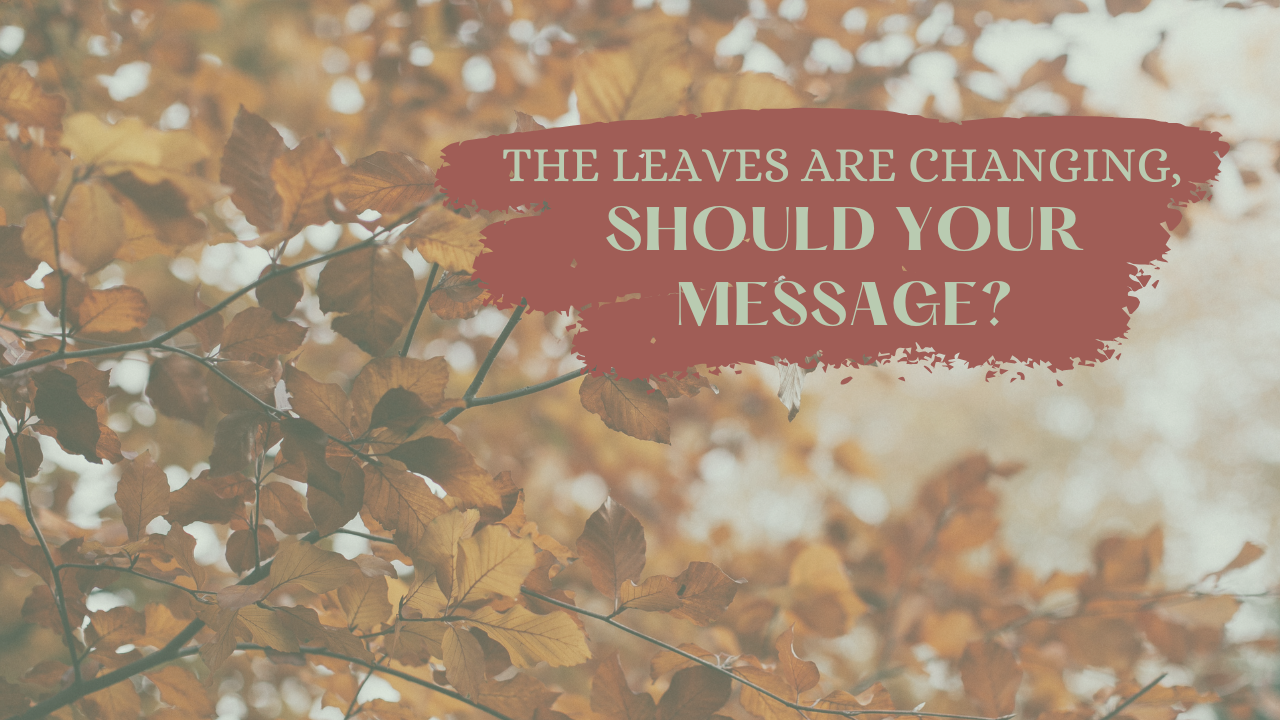The Power of Listening: What Most Leaders Miss—and Can’t Afford To

And why it matters to every person on the team.
The squeaky wheel gets oiled, right?
Why do we celebrate the ones who speak up, the ones with a point of view, a bold idea, a way with words? And yes, all of that has value, and we rarely pause to acknowledge the thing that holds most of it together:
Listening.
Not the kind that’s simply waiting for your turn to speak.
I’m referring to listening that slows the moment down. That holds space, invites clarity, and signals something simple and powerful—you matter.
This isn’t only a leadership skill. It’s a core piece of how teams communicate, how trust gets built, and how real conversations move things forward.
Listening Is a Skill—Not a Given
We like to think we’re good listeners, we have two ears and only one mouth after all. Most of us check the box—we make eye contact, nod at the right times, throw in the occasional “yeah, totally.” And real listening is more than that. It’s deliberate. It requires effort. And in fast-movin...
Are Your Conversations Aging Faster Than You Think?

I recently shared an article in our “All The Things” email that explored a surprising idea: our brains can age at a pace that doesn’t always match the rest of us. What stood out wasn’t simply the science—it was the reminder that our cognitive patterns quietly influence how we show up every day. The researchers noted that these subtle shifts in brain-health can shape decision-making, emotional regulation, and even the way we interpret the world around us.
That insight stayed with me. Because if our internal processing changes the way we think, it naturally changes the way we communicate. The gaps, assumptions, or misunderstandings we experience in conversations often start long before words are spoken.
So, using that article as a launch point, with this blog I will take you into a more practical space—how communication actually works in our daily interactions, and a few intentional ways we can strengthen it.
When we communicate well, we shorten the distance between intention and unde...
The Leaves Are Changing—Should Your Message?

As nature shifts into its most colorful season, it’s a gentle reminder that change—when done with intention—can be both beautiful and necessary. Fall invites us to pause, take stock, and let go of what no longer fits. It’s not only the trees that benefit from renewal—our communication does, too.
Whether you’re leading a team, building a brand, or simply wanting to connect with more clarity, this season offers a powerful opportunity to realign your message. To ensure your words still reflect who you are now, not who you were years ago.
This is a photo of me with my grandsons, surrounded by golden leaves and pumpkins—a small snapshot of what this season is really about: connection, presence, and the quiet beauty of slowing down.

Here are three ways to use this season as a catalyst for stronger, more authentic communication—whether you’re speaking to your team, your clients, or your broader audience.
1. Revisit Your Core Message
Think of your core message as the roots of you...
Three Signs Your Team Needs a Reset (And What to Do Before Burnout Becomes the Norm)

Every team goes through seasons. Sometimes you’re in sync, firing on all cylinders. Other times? Things feel heavy, disjointed, or simply “off”—like you’re busy all day but making no real progress.
It’s not always dramatic. In fact, the need for a reset often shows up in subtle ways—low energy on Zoom calls, delayed decisions, conversations that stay surface-level. If this feels familiar, your team may be overdue for a strategic pause.
A reset isn’t a luxury—it’s a leadership move. It realigns people, sharpens focus, and clears space for forward motion. Here are three signs your team needs one—and what to do about it.
1. You’re Always Reacting, Rarely Reframing
You start the week with priorities, and by Wednesday you’re in firefighting mode. The urgent keeps overruling the important. Deadlines shift, tension rises, and suddenly no one’s sure what the goal even is anymore.
This isn’t poor planning—it’s a lack of shared clarity. And when that’s missing, even high-performing teams...
What Poor Communication Really Costs Your Business

And why it’s more than you think
It’s easy to spot a missed deadline or a dropped ball. What’s harder to see—and often more damaging—is the ripple effect of poor communication across your team or organization.
There is a tendency to refer to “communication issues” as soft problems. Interpersonal. Inevitable. Something to bring up in a 360 review or a quarterly training. And here’s the truth: poor communication isn’t simply a culture issue—it’s a business risk. One that quietly erodes productivity, trust, and profitability every single day it goes unaddressed.
Let’s uncover what it really costs.
1- Lost Time You’ll Never Get Back
Misaligned priorities. Endless email threads. Meetings that feel like déjà vu. When teams aren’t clear on expectations, timelines, or ownership, even high performers can spin their wheels.
And it’s not only frustrating—it’s expensive.
According to a McKinsey study, employees spend an average of 28% of their workweek on email and another 20% on internal ...
Don’t Wait Until You’re 80 to Learn This

A few weeks ago, my friend Bruce Hunter sent me a short note that hit harder than most books I’ve read this year. It was a list of ten life lessons from an octogenarian—the kind of wisdom that comes only after decades of wins, losses, and the quiet in-between moments that shape who we are.
What struck me wasn’t simply the advice itself—it was how immediately applicable it felt. This wasn’t “someday when I’m older” guidance. It was right now guidance. The kind that makes you stop scrolling, start thinking, and maybe even change something before the day is over.
Here are those ten lessons, with a few reflections of my own along the way.
1. Network intensely.
Luck, as it turns out, has a lot to do with who you know—and who knows you. And the magic isn’t just in collecting contacts; it’s in nurturing them. Send that interesting article, make the introduction, spark a conversation. The more threads you weave, the stronger your net.
2. Read everything.
As we get older, our focus ...
Why Being “Fenced In” Might Be the Freedom You’ve Been Missing

My colleague recently had a new fence built around her backyard. Nothing elaborate—just a clean, well-structured barrier to mark the space and offer some privacy. Before that, her yard had a low, half-hearted kind of boundary. It felt open, shared with the neighbors. Free, in a way. So naturally, she was a little hesitant. Would this new fence make her feel boxed in? Would it take away the openness she’d grown used to?
Here’s the thing: after the fence went up, something shifted.
She told me, “It feels bigger now. I can relax out there. I’m not thinking about who’s watching or what I’m supposed to share with the world. It’s mine.”
That stuck with me. Because as an entrepreneur and a leader, I’ve felt that tension too—the worry that adding structure, setting boundaries, or putting constraints around my time or creativity will somehow limit what I’m capable of. That it’ll kill spontaneity or put me “in a box.” And is that always such a bad thing?
I don’t think so. Stay with me her...
A “Fart Walk” for Your Brain: Why a Post-Meeting Stroll Might Be the Best Communication Tool You’re Not Using

We’ve all heard of the post-meal walk. Maybe you’ve even tried one recently—except now, thanks to social media, it has a slightly less elegant name: the fart walk. As unglamorous as it sounds, the science behind it is solid. Walking after eating can boost digestion, regulate blood sugar, and even lift your mood. And what if we expanded that concept?
What if we treated a quick walk as a digestive aid—and as a mental reset?
In the same way a fart walk helps the body process and release what it doesn’t need, a walk after (or before) a high-stakes meeting or presentation can help clear the cognitive clutter—stress, adrenaline, looping thoughts—so you can return with more clarity, focus, and presence.
Let’s call it a “fart walk for your brain.”
Why Your Brain Needs a Digestive System, Too
Note “Scientifickness” incoming: When you walk, your body engages in a series of micro-movements that regulate everything from blood flow to mood. And there’s more going on under the surface. Mild...
You Just Misspoke—Now What? 5 Ways to Recover Without Losing the Room

We’ve all had that moment. You say something in a meeting or presentation, and as the words leave your mouth, you realize something's off. Maybe it was a fact that wasn’t quite right. Maybe you fumbled your phrasing. Maybe you misread the room entirely.
The question isn’t whether mistakes happen—they do. The real question is: What do you do next?
Own It, Don’t Amplify It
Trying to cover up a mistake in communication rarely works. People catch on. And more importantly, you know. That internal awareness starts to chip away at your confidence. Instead of preserving credibility, dodging a mistake can quietly corrode it.
The better move? Acknowledge it simply and directly. No dramatic apology. No awkward over-explaining. Simply a clear course correction:
These phrases keep the conversation moving, show accountability, and reinforce trust.
A few months ago, a c...
Want Real Impact? Get Your Hands Dirty.

There’s something grounding about gardening. The soil under your nails, the quiet rhythms of tending to something that grows over time—it’s a place where being present feels effortless (if you have a green thumb that is). And funny enough, it’s in those quiet moments among the dirt, mulch and flowers that I find some of the clearest insights about how we communicate with each other.
Here’s one I’ve been saying for years: We are all 360-degree people.
We are full spectrum, layered individuals with different dimensions that come forward depending on where we are and who we’re with. That’s not inauthenticity—it’s adaptability. It’s presence. And it’s human.
The Right Tools for the Soil You’re In
Imagine this: you wear a three-piece suit to work every day. It’s tailored, intentional, and reflects a version of you that is powerful and polished. Now picture wearing that same suit to pull weeds and prune your backyard hydrangeas. Makes no sense, right? You’d ruin the suit—and honest...
